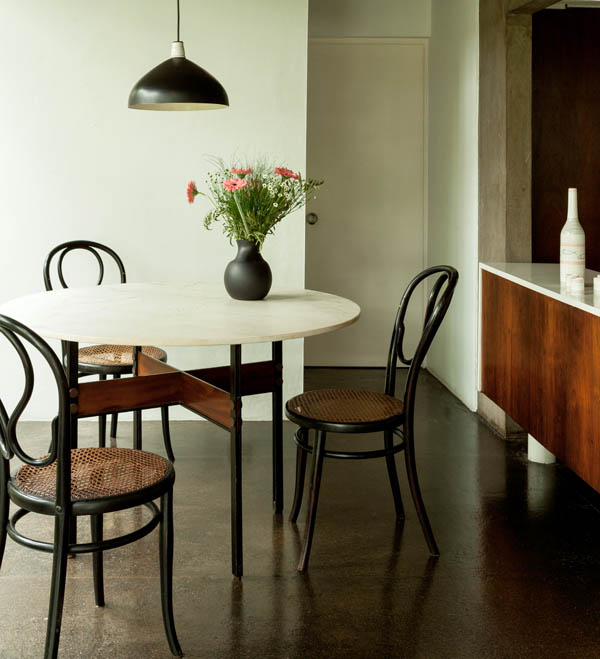
How modernism came to Brazil is a tale of the masses, not the few. The 1930s saw rapid urbanization as citizens of many ravaged nations—Syria, Greece, Romania, Poland—fled west across the sea. In 1936, Le Corbusier arrived in finer style. The Swiss-French architect flew the Graf Zeppelin’s Friedrichshafen to Rio de Janeiro service, which offered five nights of silver service en route. He was in Rio to design the city’s landmark Ministry of Education and Health. A 30-year-old Oscar Niemeyer assisted with Le Corbusier’s plans to build big, bold, functional and tall. (A decade later the duo would work on the UN headquarters in New York; Niemeyer was the youngest member of the Board of Design.)
In 1938, the Brazilian nation celebrated its 50th birthday. The planet’s fifth-largest country needed more ministries, schools, housing blocks and airports. Niemeyer and his equally youthful colleagues turned to Corbusien concepts of cost-effective living space in the sky. They spurned ostentation and adornment: A surging populace was catered to by a deft, rationalist beauty that became a movement in itself. In 1943, New York’s Museum of Modern Art displayed its Brazil Builds exhibition. As Europeans were building neoclassical leviathans—or destroying those in neighboring countries—Brazil was building an architectural New World.
The movement was furthered when Artigas designed the University of São Paulo’s Faculty of Architecture and Urbanism (FAU). The building quite literally turned architecture on its head. Skinny cement legs supported six stories of teaching space, all linked by sloping walkways to encourage collaborative chat. Artigas’ spatial curriculum influenced a student that would carry the torch further, both in architecture and as an FAU professor. Paulo Mendes da Rocha, like Niemeyer a winner of the Pritzker Prize, built his own futurist house in 1964. Its concrete columns and cement table no doubt influenced another young colleague at the FAU, Julio Roberto Katinksy.
Katinsky retired from lecturing, designing and writing books in 2002. One of the people to briefly meet this link with the nation’s architectural past was Milan-based interior stylist Leandro Favaloro, who staged Katinsky’s property for a Casa Vogue shoot in 2011. He says, “While living in Brazil I saw hundreds of fabulous homes but this was the best. It had a tropical feeling of the rainforest creeping through the concrete doorframes. You could be in the jungle, not in central São Paulo.” Like most Brazilian modernist homes, it had strong, simple and clean lines, yet was near devoid of décor. Favaloro’s team had to import their own chairs and design tomes for the shoot.
There’s an architectural adage that nothing fades faster than visions of the future. Yet the Katinsky house and its contemporaries have aged well. The movement’s buildings look timeless and definitively unEuropean. In a word, modern.